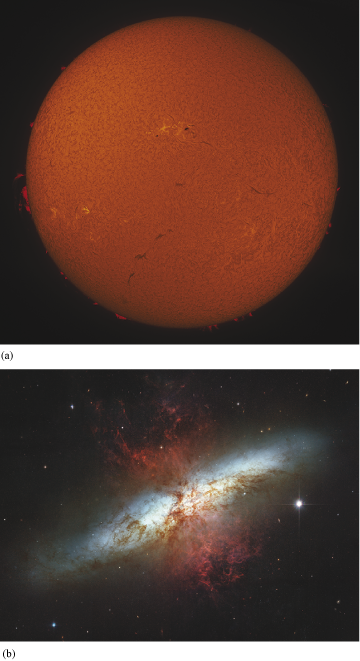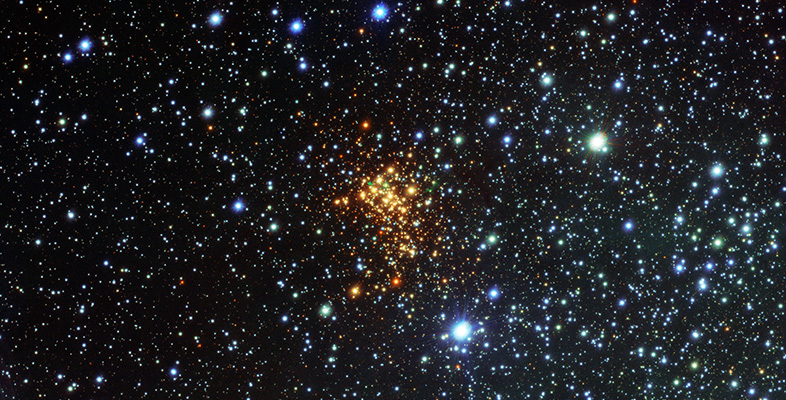3.3 Narrow-band images
The radio image of NGC 6964 you’ve just examined is an example of a particular type of astronomical image that can be extremely scientifically useful. It is a narrow-band image, which means that the filter used to record the light spans only a very narrow range in wavelengths.
The atomic composition of astronomical objects leads to emission and absorption features that provide us with information about physical conditions (e.g. temperatures, densities, and chemistry). This is why spectroscopy is one of the most powerful tools available to astronomers. However, we can also use image methods to study these emission lines, by filtering out all of the light coming from the continuum and making an image of just the brightness of light produced by a single emission line.
The radio astronomy technique of mapping at 21 cm is an example of this, but it is used across the full electromagnetic spectrum. A common example in the optical part of the spectrum also relates to emission from hydrogen.
The emission line (the first of the Balmer series) is produced in regions that have high temperatures. Figure 13 shows some examples of images, and the sort of details that they can reveal. A typical filter spans a wavelength range of 0.07 nm, which is over 1000 times narrower than typical broadband filters.

Other emission lines that are studied in the visible light range using narrow-band images include:
- the [] 500.7 nm emission line, which is produced in planetary nebulae and active galaxies
- methane features, which are particularly interesting for studying planets because of methane’s association with biological and/or geological activity.
The Hubble Space Telescope currently has more than 25 different narrow-band optical filters available to carry out different types of scientific investigations. While examining spectra is very powerful, for extended objects narrow-band images provide an invaluable method for exploring which regions are producing particularly strong emission lines, as in Figure 13b.
In the X-ray part of the spectrum, narrow-band images can be particularly powerful, because many heavier elements such as sulfur, silicon, magnesium and iron produce strong emission lines at X-ray wavelengths. These can be used to provide detailed information about the atomic composition of gas in regions as diverse as supernova remnants and clusters of galaxies. Most importantly, they trace the temperature of the gas really closely, so they can provide information about the thermodynamics of energetic behaviour in the Universe.
